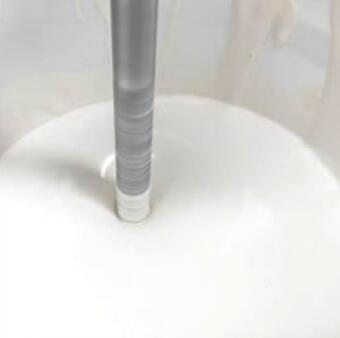Nitrile rubber and latex are two important materials that we often come into contact with in our daily life and production. They both have unique properties and application fields. This article will explore the differences between nitrile rubber and latex in depth to help readers better understand the characteristics and application scenarios of these two materials.
1. Nitrile rubber
Nitrile rubber (NBR) is a synthetic rubber mainly copolymerized by acrylonitrile and butadiene. Its characteristics are as follows: 1. Physical properties: Nitrile rubber has excellent wear resistance, oil resistance, chemical corrosion resistance and superheated water resistance. Its color is usually white or slightly yellow, and its density is high. In addition, its tensile strength, elastic modulus and hardness are also high. 2. Chemical properties: Because the molecular chain of nitrile rubber contains polar groups, it has excellent adhesion properties. In addition, it also has good ozone resistance and aging resistance. 3. Application fields: Nitrile rubber is mainly used to manufacture automotive parts such as oil-resistant seals, oil pipes, oil bladders, and various industrial products and cable sheaths. In addition, it can also be used to make certain types of gloves and parts of medical devices.
2. Latex
Latex is a mixture of natural rubber and air, and its main components are rubber particles and other natural additives. The characteristics of latex are as follows: 1. Physical properties: Latex has good elasticity and wear resistance. Its texture is relatively soft and easy to stretch and bend. Latex also has excellent air permeability and moisture absorption, so it is very suitable for making comfortable mattresses, pillows and other sleeping products. 2. Chemical properties: The natural rubber component in latex gives it natural antibacterial and anti-mite properties. In addition, the natural ingredients in latex are friendly to human skin and will not cause allergies or irritation. 3. Application areas: Latex is widely used in the production of mattresses, pillows and other sleeping products because of its excellent air permeability and support to improve sleep quality. In addition, latex is also used to make baby products, such as bottles and pacifiers, because it is harmless to the human body and easy to clean. Latex gloves are also one of the common applications, especially in the medical and health industries. Compared with nitrile rubber gloves, latex gloves are generally softer and more comfortable.

3. Comparison between nitrile rubber and latex
1. Oil and water resistance: Nitrile rubber is widely used in the manufacture of oil-resistant seals and oil pipes due to its excellent oil resistance; while latex has good water resistance and is suitable for making products in contact with water.
2. Elasticity and comfort: Latex has good elasticity, making the product more comfortable; while nitrile rubber tends to have higher hardness and strength.
3. Application areas: Nitrile rubber is mainly used in the fields of automobiles and industrial manufacturing; while latex is more used in sleeping products, baby products and medical fields.
4. Price: Nitrile rubber is usually more expensive than latex due to its high production cost. In summary, nitrile rubber and latex have their own characteristics and are widely used. The choice of material depends on the specific usage scenario and needs. I hope that through the introduction of this article, readers can better understand the characteristics and application areas of these two materials so as to choose the appropriate material in actual use.
Related Articles
Comments
Please Join Us to post.
0